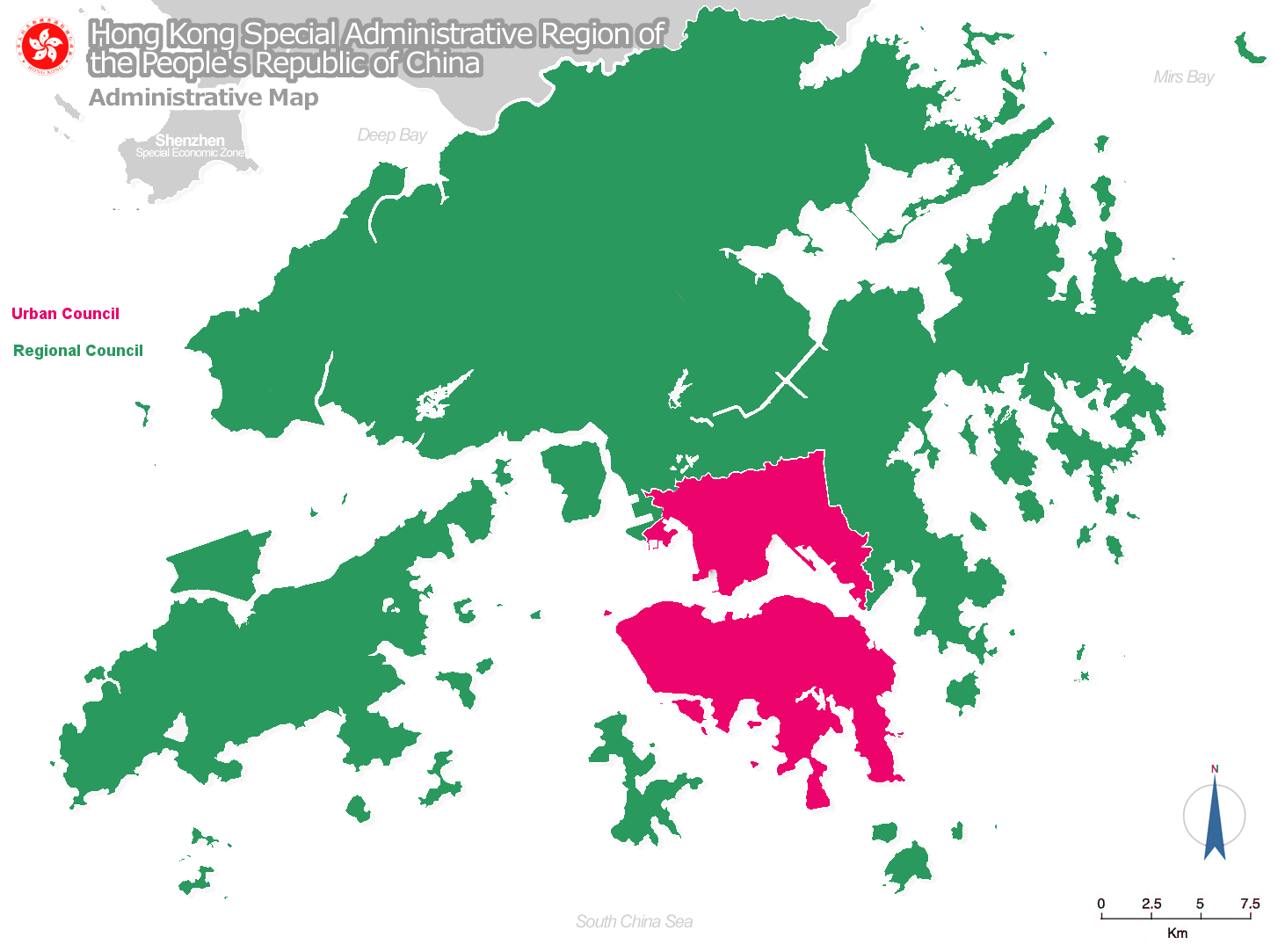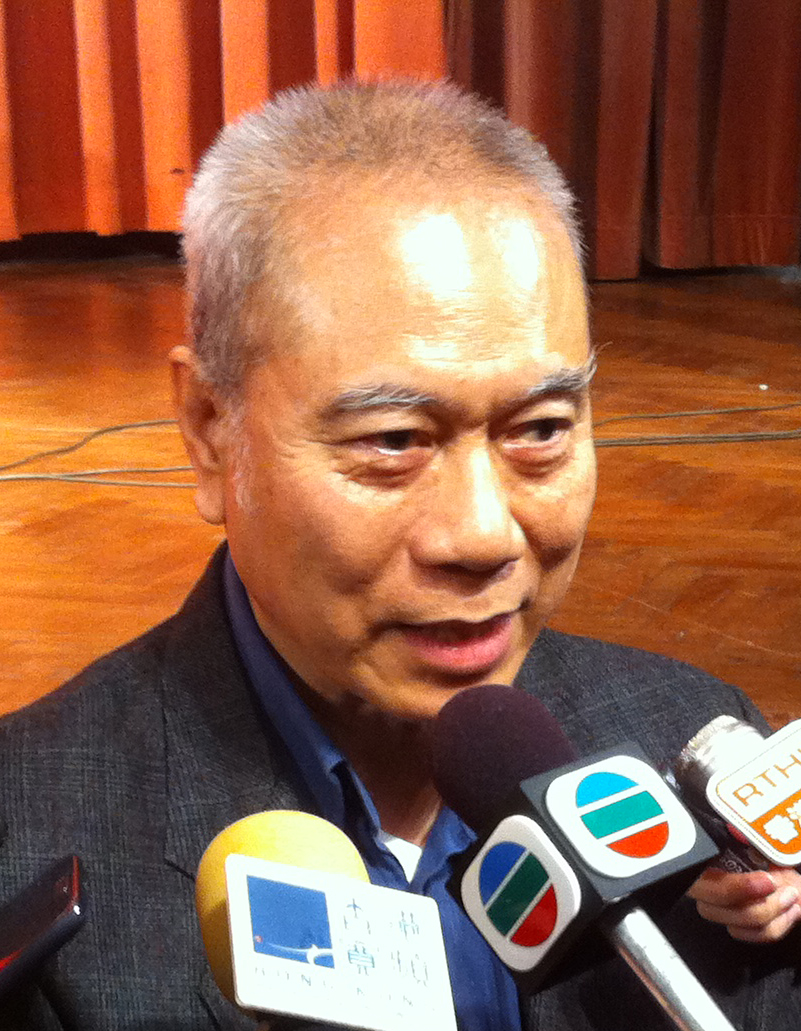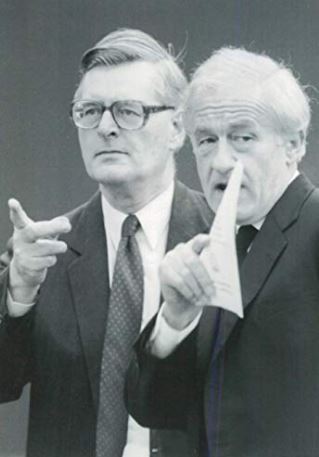|
RegCo
The Regional Council (RegCo; ) was a municipal council in Hong Kong responsible for municipal services in the New Territories (excluding New Kowloon). Its services were provided by the Regional Services Department, the executive arm of the Regional Council. Its headquarters were located near Sha Tin station. History Technically, only Hong Kong Island, Kowloon, and New Kowloon were within the purview of the Urban Council. But the Urban Services Department, the executive arm of the Urban Council, began servicing the New Territories with its establishment in 1953. Following public consultation, a Provisional Regional Council was established on 1 April 1985 under the auspices of the colonial Hong Kong Government, to provide for the New Territories what the Urban Council did for Hong Kong Island, New Kowloon and Kowloon. Like the Urban Council, the Regional Council was created in 1986 as an elected body comprising representatives from constituencies and district boards. In 1986 ... [...More Info...] [...Related Items...] OR: [Wikipedia] [Google] [Baidu] |
1986 Hong Kong Municipal Elections
The 1986 Hong Kong Urban Council and Regional Council elections were the municipal elections held on 6 March 1986 for the elected seats of the Urban Council for Hong Kong Island, Kowloon and New Kowloon and newly created Regional Council (Hong Kong), Regional Council for the rest of the New Territories respectively. Overview 15 seats in the Urban Council remained the directly elected by the general residents and 15 appointed by the Governor. For the newly formed Regional Council, 12 seats were directly elected and 9 seats were elected by the New Territories District Boards members, with 12 appointed members and 3 ''ex officio'' members of the Chairman and two vice chairmen of the Heung Yee Kuk. The first-past-the-post voting system was used. Total of 362,725, which shared 27 per cent of the voters cast their votes on the election day on 6 March, 143,888 of which voted (35.9 per cent turnout) in the Regional Council and 218,837 of them (23.2 per cent turnout) voted in the Urban Co ... [...More Info...] [...Related Items...] OR: [Wikipedia] [Google] [Baidu] |
Municipal Council
A municipal council is the legislative body of a municipality or local government area. Depending on the location and classification of the municipality it may be known as a city council, town council, town board, community council, rural council, village council, or board of aldermen. Australia Because of the differences in legislation between the states, the exact definition of a city council varies. However, it is generally only those local government areas which have been specifically granted city status (usually on a basis of population) that are entitled to refer to themselves as cities. The official title is "Corporation of the City of ______" or similar. Some of the urban areas of Australia are governed mostly by a single entity (see Brisbane and other Queensland cities), while others may be controlled by a multitude of much smaller city councils. Also, some significant urban areas can be under the jurisdiction of otherwise rural local governments. Periodic re-alignm ... [...More Info...] [...Related Items...] OR: [Wikipedia] [Google] [Baidu] |
Kowloon
Kowloon () is an urban area in Hong Kong comprising the Kowloon Peninsula and New Kowloon. With a population of 2,019,533 and a population density of in 2006, it is the most populous area in Hong Kong, compared with Hong Kong Island and the rest of the New Territories. The peninsula's area is about . Location Kowloon is located directly north of Hong Kong Island across Victoria Harbour. It is bordered by the Lei Yue Mun strait to the east, Mei Foo Sun Chuen, Butterfly Valley and Stonecutter's Island to the west, a mountain range, including Tate's Cairn and Lion Rock to the north, and Victoria Harbour to the south. Also, there are many islands scattered around Kowloon, like CAF island. Administration Kowloon comprises the following districts: *Kowloon City * Kwun Tong *Sham Shui Po *Wong Tai Sin * Yau Tsim Mong Name The name 'Kowloon' () alludes to eight mountains and a Chinese emperor: Kowloon Peak, Tung Shan, Tate's Cairn, Temple Hill, Unicorn Ridge, Lion Rock, Be ... [...More Info...] [...Related Items...] OR: [Wikipedia] [Google] [Baidu] |
Provisional Urban Council
The Urban Council (UrbCo) was a municipal council in Hong Kong responsible for municipal services on Hong Kong Island and in Kowloon (including New Kowloon). These services were provided by the council's executive arm, the Urban Services Department. Later, the equivalent body for the New Territories was the Regional Council. The council was founded as the Sanitary Board in 1883. It was renamed the Urban Council when new legislation was passed in 1936 expanding its mandate. In 1973 the council was reorganised under non-government control and became financially autonomous. Originally composed mainly of ''ex-officio'' and appointed members, by the time the Urban Council was disbanded following the Handover it was composed entirely of members elected by universal suffrage. History The Urban Council was first established as the Sanitary Board in 1883. In 1887, a system of partial elections was established, allowing selected individuals to vote for members of the Board. On 1 ... [...More Info...] [...Related Items...] OR: [Wikipedia] [Google] [Baidu] |
Chief Executive Of Hong Kong
The Chief Executive of the Hong Kong Special Administrative Region is the representative of the Hong Kong Special Administrative Region and head of the Government of Hong Kong. The position was created to replace the office of governor of Hong Kong, the representative of the monarch of the United Kingdom during British rule.Bill 1999 " Info.gov.hk. Retrieved 28 March 2010. The office, stipulated by the , formally came into being on 1 July 1997 when the sovereignty of Hong Kong was transferred from the |
Transfer Of The Sovereignty Of Hong Kong
Sovereignty of Hong Kong was transferred from the United Kingdom to the People's Republic of China (PRC) at midnight on 1 July 1997. This event ended 156 years of British rule in the former colony. Hong Kong was established as a special administrative region of China (SAR) for 50 years, maintaining its own economic and governing systems from those of mainland China during this time, although influence from the central government in Beijing increased after the passing of the Hong Kong national security law in 2020. Hong Kong had been a colony of the British Empire since 1841, except for four years of Japanese occupation from 1941 to 1945. After the First Opium War, its territory was expanded on two occasions; in 1860 with the addition of Kowloon Peninsula and Stonecutters Island, and again in 1898, when Britain obtained a 99-year lease for the New Territories. The date of the handover in 1997 marked the end of this lease. The 1984 Sino-British Joint Declaration had set the con ... [...More Info...] [...Related Items...] OR: [Wikipedia] [Google] [Baidu] |
1991 Hong Kong Municipal Elections
The 1991 Hong Kong Urban Council and Regional Council elections were the municipal elections held on 5 May 1991 for the elected seats of the Urban Council and Regional Council respectively. The election saw the direct rivalry between the newly established political parties, the liberal United Democrats of Hong Kong (UDHK) and the conservative Liberal Democratic Federation of Hong Kong (LDFHK) which the liberal forces won a landslide victory. Overview For the Urban Council, 15 seats were the directly elected by the general residents and ten seats were elected by the Hong Kong Island and Kowloon District Boards members and 15 appointed by the Governor. For the Regional Council, 12 seats were directly elected and nine seats were elected by the New Territories District Boards members, with 12 appointed members and three ''ex officio'' members of the chairman and two vice-chairmen of the Heung Yee Kuk. The first-past-the-post voting system was in use. The elections were one of the ... [...More Info...] [...Related Items...] OR: [Wikipedia] [Google] [Baidu] |
1989 Hong Kong Municipal Elections
The 1989 Hong Kong Urban Council and Regional Council elections were the municipal elections held on 9 March 1989 for the elected seats of the Urban Council and Regional Council respectively. Overview 15 seats in the Urban Council was the directly elected by the general residents and ten seats were elected by the Hong Kong Island and Kowloon District Boards members and fifteen appointed by the Governor. For the Regional Council, twelve seats were directly elected and 9 seats were elected by the New Territories District Boards members, with twelve appointed members and three ''ex officio'' members of the Chairman and two vice chairmen of the Heung Yee Kuk. The first-past-the-post voting system was used. A total of 213,352 voters, 17.6% of the total electorates cast their votes, in which 105,826 voters (14.2%) voted in the Urban Council, 9% lower than the last election, and 107,526 voters (23.9%) voted in the Regional Council, about 10% lower than the last election. 7 of the tota ... [...More Info...] [...Related Items...] OR: [Wikipedia] [Google] [Baidu] |
District Councils Of Hong Kong
The district councils, formerly district boards until 1999, are the local councils for the 18 districts of Hong Kong. History Before establishment An early basis for the delivery of local services were the Kaifong associations, set up in 1949. However, by the 1960s, these had ceased to represent local interests, and so, in 1968, the government established the first local administrative structure with the city district offices, which were intended to enable it to mobilise support for its policies and programmes, such as in health and crime-reduction campaigns. An aim was also to monitor the grass roots, following the 1967 riots., from p140 Under the Community Involvement Plan, launched in the early 1970s, Hong Kong and Kowloon were divided into 74 areas, each of around 45,000 people. For each, an 'area committee' of twenty members was then appointed by the city district officers, and was comprised, for the first time, of members from all sectors of the local community, ... [...More Info...] [...Related Items...] OR: [Wikipedia] [Google] [Baidu] |
First-past-the-post Voting
In a first-past-the-post electoral system (FPTP or FPP), formally called single-member plurality voting (SMP) when used in single-member districts or informally choose-one voting in contrast to ranked voting, or score voting, voters cast their vote for a candidate of their choice, and the candidate who receives the most votes wins even if the top candidate gets less than 50%, which can happen when there are more than two popular candidates. As a winner-take-all method, FPTP often produces disproportional results (when electing members of an assembly, such as a parliament) in the sense that political parties do not get representation according to their share of the popular vote. This usually favours the largest party and parties with strong regional support to the detriment of smaller parties without a geographically concentrated base. Supporters of electoral reform are generally highly critical of FPTP because of this and point out other flaws, such as FPTP's vulnerability t ... [...More Info...] [...Related Items...] OR: [Wikipedia] [Google] [Baidu] |
Architectural Services Department
The Architectural Services Department is a department of the Government of Hong Kong responsible for the design and construction of many public facilities throughout the territory. It is subordinate to the Works Branch of the Development Bureau and the current director is Mr. Tse Cheong Wo, Edward. History The origins of the Architectural Services Department lie in the Architectural Office, one of the sub-departments of the former Public Works Department (PWD). The PWD was founded in 1891, but the structure of the department at that time is reportedly unclear. The Architectural Office existed by 1939, and following the disruption in operations during the Japanese occupation, the unit was kept busy in the postwar years by rebuilding work. The 1948 annual report of the Public Works Department reported that 274 government buildings were repaired that year. During the 1960s the Architectural Office was heavily involved in the resettlement housing programmes, but these duties w ... [...More Info...] [...Related Items...] OR: [Wikipedia] [Google] [Baidu] |
David Wilson, Baron Wilson Of Tillyorn
David Clive Wilson, Baron Wilson of Tillyorn, (, born 14 February 1935) is a retired British administrator, diplomat and Sinologist. He was the penultimate Commander-in-Chief and 27th Governor of Hong Kong (from 1987 to 1992). He served as Lord High Commissioner to the General Assembly of the Church of Scotland, the British Monarch's representative to the Assembly, in 2010 and 2011. He retired from the House of Lords on 12 February 2021 after sitting as a crossbencher for over 28 years. Early life and career Wilson was born in Alloa in Scotland on 14 February 1935WILSON OF TILLYORN ''Who's Who 2017'', A & C Black, 2017 (online edition, Oxford University Press, 2016) and was educated at |








